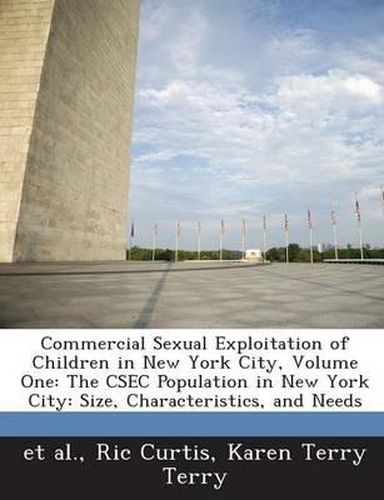Readings Newsletter
Become a Readings Member to make your shopping experience even easier.
Sign in or sign up for free!
You’re not far away from qualifying for FREE standard shipping within Australia
You’ve qualified for FREE standard shipping within Australia
The cart is loading…






For 2005 and 2006, the study estimated that the CSEC population consisted of 3,946 youth; however, an important caveat to this estimate is noted that indicates this is a low estimate. An unexpected finding was the large number of boys in this population. Even with the alterations to the recruitment of research subjects designed to favor the recruitment of girls, boys still outnumbered girls in the sample. Black youth were estimated to be the largest single ethnic group in the CSEC population; however, there was a significant presence of Whites, Hispanics, and youth who identified themselves as multiracial. Reasons why youth enter CSEC markets are complex, but the chronic lack of jobs for youth in many neighborhoods is a significant factor. Many indicated they were still actively \“looking for a job\” and did not like being a prostitute to earn money. Girls, boys, and transgender youth all apparently entered the commercial sex market at about the age of 15 and a half. Unexpectedly, pimps were not key actors in bringing youth into the market or in controlling them once they were in the market. A high percentage of youth reported that their \“friends\” were responsible for their entry to the markets, although it seemed to researchers that their \“friends\” were sometimes acting on behalf of pimps. Almost all of the youth reported serving male customers, who were predominately White and between 25 and 55 years old. Information is also provided on law enforcement encounters and current services for these youth. Data were obtained from a sample of 329 youth recruited for this study.
$9.00 standard shipping within Australia
FREE standard shipping within Australia for orders over $100.00
Express & International shipping calculated at checkout
For 2005 and 2006, the study estimated that the CSEC population consisted of 3,946 youth; however, an important caveat to this estimate is noted that indicates this is a low estimate. An unexpected finding was the large number of boys in this population. Even with the alterations to the recruitment of research subjects designed to favor the recruitment of girls, boys still outnumbered girls in the sample. Black youth were estimated to be the largest single ethnic group in the CSEC population; however, there was a significant presence of Whites, Hispanics, and youth who identified themselves as multiracial. Reasons why youth enter CSEC markets are complex, but the chronic lack of jobs for youth in many neighborhoods is a significant factor. Many indicated they were still actively \“looking for a job\” and did not like being a prostitute to earn money. Girls, boys, and transgender youth all apparently entered the commercial sex market at about the age of 15 and a half. Unexpectedly, pimps were not key actors in bringing youth into the market or in controlling them once they were in the market. A high percentage of youth reported that their \“friends\” were responsible for their entry to the markets, although it seemed to researchers that their \“friends\” were sometimes acting on behalf of pimps. Almost all of the youth reported serving male customers, who were predominately White and between 25 and 55 years old. Information is also provided on law enforcement encounters and current services for these youth. Data were obtained from a sample of 329 youth recruited for this study.